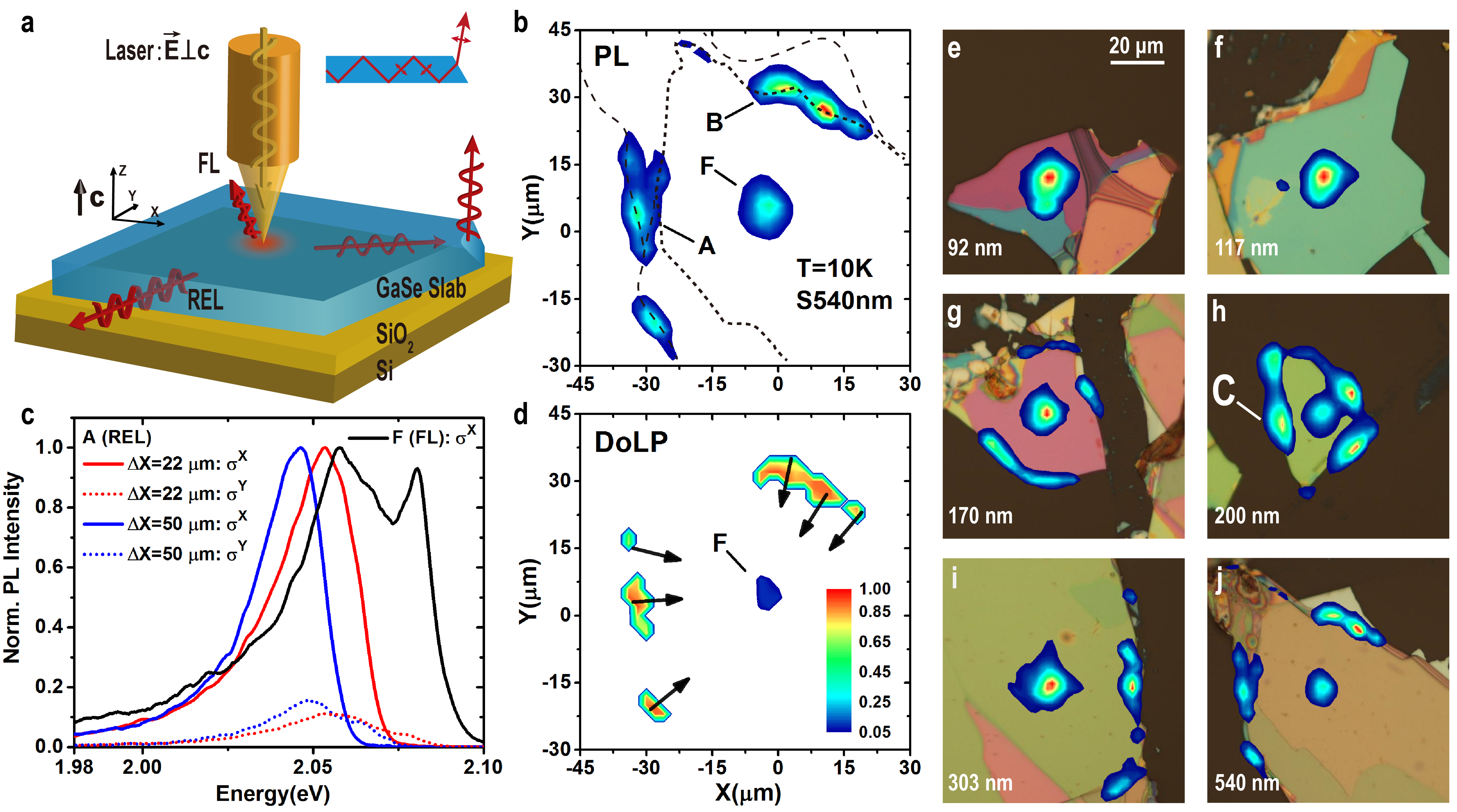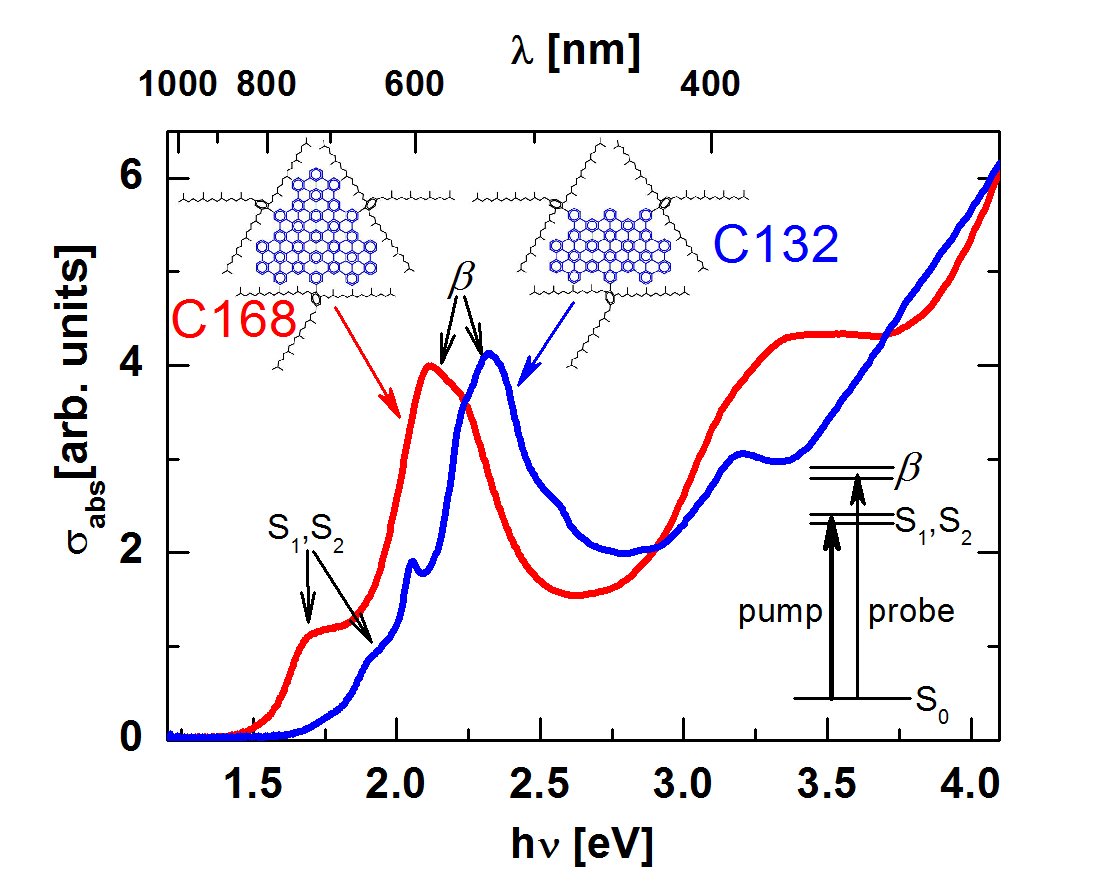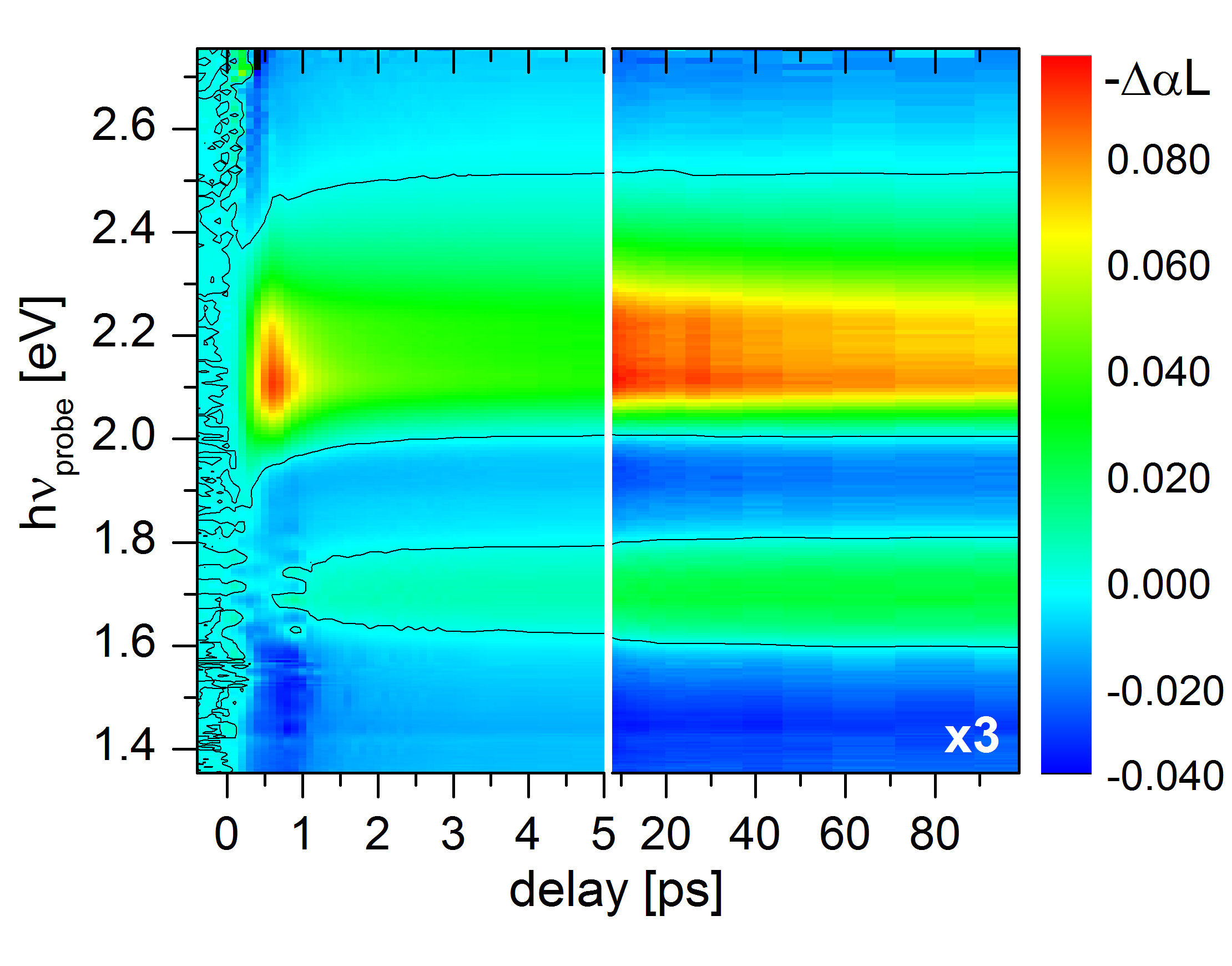 |
The
McGuire Group |
 |
|
Ultrafast
and Nonlinear
Optical Studies of Reduced Dimensional and Quantum Confined Systems
|
| Home | Research | Publications | Members | Prof. McGuire | Laboratory | Links |
Our research focuses
on interactions in reduced dimensional
and nanoscale systems, particularly the effects of confinement on the
interactions between different degrees of freedom (charge, spin,
vibrational)
as manifested in electronic and vibrational dynamics. Confined systems
of
interest include doped and heterostructured semiconductor nanocrystal
quantum
dots (QDs) and colloidal graphene QDs. Our recent work has focused
on the
electronic properties of colloidal graphene QDs and GaSe. GaSe is a layered material
with an indirect bandgap in which the direct bandgap is only about 10
meV below the indirect gap. Thus, strong emission is observed even at
low temperatures from bulk to few-layer samples. The large
crystal-field splitting of the valence bands leads to the possibility
of generating excited carriers with a high degree of spin polarization
and long-lived spin memory (Figure 1). Graphene QDs are nanoscale particles of
sp2-hybridized
carbon with narrow size dispersion, in which confinement opens a large
gap from
the otherwise gapless extended graphene band structure (Figure 2). With
our synthetic collaborator, Professor Liang-shi Li at Indiana
University, we are able to study QDs large enough that the lowest
energy confined excitons can be understood in terms of confined Dirac
fermions. These allow us to address fundamental questions about exciton
interactions that would otherwise be difficult to address in extended,
gapless graphene. We
address nanoscale systems via a variety of ultrafast nonlinear optical
techniques.
| Coherent nonlinear optical processes are especially sensitive to the symmetries of a system (e.g., the breaking of inversion symmetry at the surface of a system with a centrosymmetric bulk structure), while optical techniques are among the few ways to directly access dynamics on the picosecond and sub-picosecond timescales that characterize many processes in condensed phases. Among problems of interest to us is the vibrational dynamics at water surfaces, where the hydrogen bond network is essential to numerous physical, chemical, and biological phenomena and leads to unusual properties of water including sub-picosecond vibrational relaxation (Figure 3). |  |
Figure 1: Spin dynamics in GaSe: Thin slabs of e-GaSe
excited by light propagating along the c-axis and so with electric
field perpendicular to the c-axis can emit light at the edges (b)
through wave-guided modes. This remote-edge luminescence shows a high
degree of linear polarization (c and d) for slabs thicker than about
160 nm (e-j). The linear polarization is along the line from the
excitation focal spot to the edge and so represents a rotation of the
exciton dipole. This rotation is a manifestation of the spin dynamics
of the lowest exciton manifold. (From Yanhao Tang et al., Phys. Rev. Applied 4, 034008 (2015). | |||
  Figure 2: Ground state absorption spectra (upper panel) of colloidal
graphene quantum dots (inset) consisting of 132 and 168 sp2-hybridized
carbon atoms
(blue) and ligands (black). Lower panel shows the change in the
absorption coefficient times the sample length as a function of probe
wavelength and delay relative to a pump pulse. The initial dynamics at 2.2 eV reflect rapid
biexciton Auger recombination. The spectral oscilations at a given
delay reflect, e.g., exciton-exciton interactions. (From Cheng Sun et al., Phys. Rev. Lett. 113, 107401 (2014). |
Figure
3: How do the dynamics of the hydrogen-bond network change at an
extended hydrophobic interface compared to a water/air interface?
Pump-probe sum-frequency generation (SFG) reveals the timescales for
relaxation of the dangling OH (i.e., non-hydrogen-bonded) stretch
excited population after excitation by a resonant infrared (IR) pump.
The upper left panel shows pump-probe traces at the hydrophoboic
fused-silica/octadecylsilane/water interface for pump pulse
polarized either in the optical plane (p) or perpendicular to the
optical plane (s). At
long delays, data for s- and p-polarized pump differ only due to
differing amounts of absorbed energy due to the anisotropic orientation
of the dangling OH population. Normalization of the long delay signals
reveals a difference (shaded blue region) reflecting orientational
dynamics. The average and difference between the pump-induced changes
for s- and p-polarization are shown in the upper left panel. The
average reflects population relaxation, and the difference reflections
both population relaxation and the return to the ground and
excited-state populations to the equilibrium orientational
distribution. We find that the reorientation from a dangling to a
hydrogen-bonded configuration occurs with a time constant of about 1.6
ps, about 50% slower than for the water/air interface. (From
Shunhao Xiao et al., JACS, in press (2016).) |
||